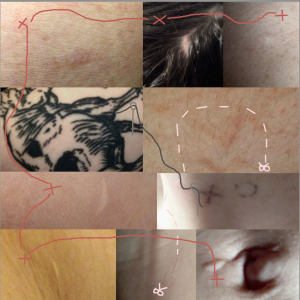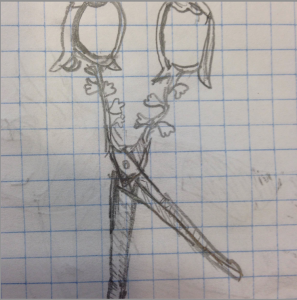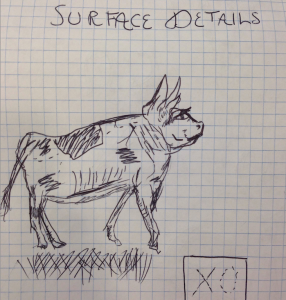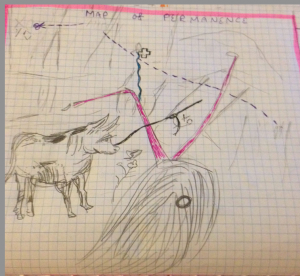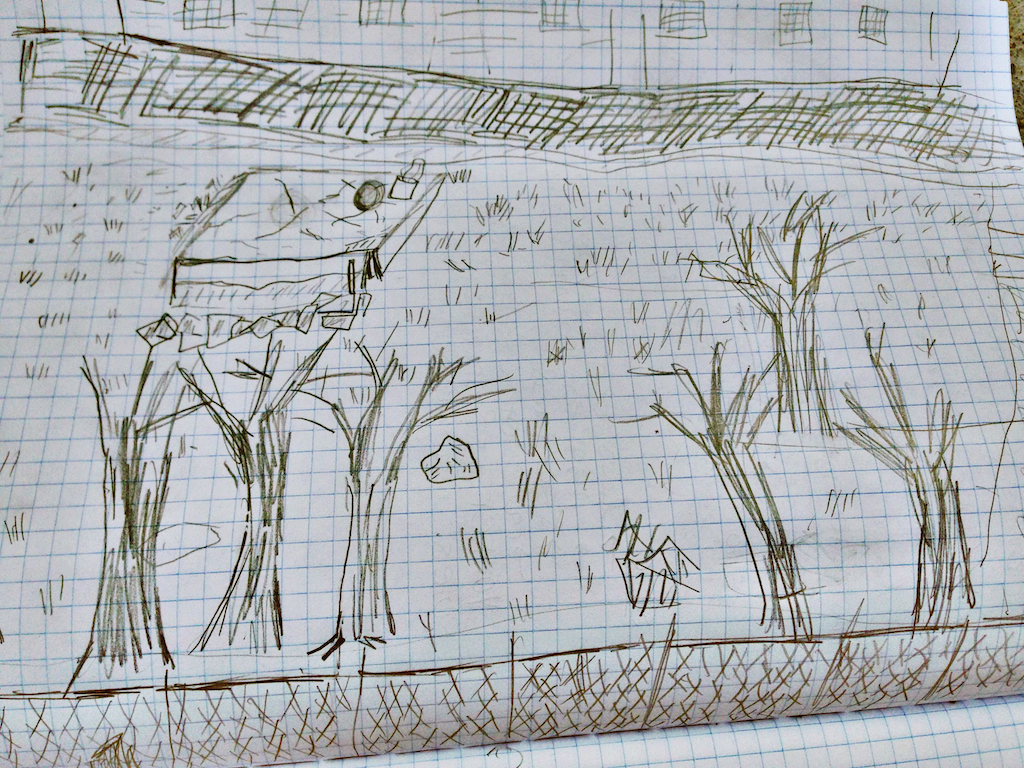I experienced a lot of difficulty when posed with the task of creating a map that represents both myself and something invisible. Part of this challenge stems from the fact that my background in visual arts is sparse: my most recent visual arts class was a black and white film photography course. I had trouble envisioning myself creating something that could take up 40 by 40 inches of space, and most of my initial brainstorming came in the form of text rather than images. Finally, I decided that I would work with images my own body, but instead of depicting a typical representation of it, I would use close ups of particular areas of my skin that tell a story. There are a lot of cliches about how scars “tell stories” or “show survival”, but rarely do we, as consumers, see close up images of them in a large scale. Usually, if presented with scars, we see them in a larger context of a person’s entire body. My idea to feature closeups of different scarring, from the time a ski rolled down a hill and hit me on the head to when I had my appendix removed, works well with the concept of the map as a guide or something that humans use to piece different locations together and see connections. By having closeup photographs as the surface of the map, I, in one way, create the opposite of a standard map, as maps usually show a zoomed out version of their location rather than a zoomed in one. From the reading, I was drawn to the concept of maps providing humans with “a reality that exceeds our reach, our vision, the span of our days”. My self portrait connects past events that are invisible to most people outside of myself. Dennis Wood deepens this idea, saying, “the map presents us with the reality we know as differentiated from the reality we see and hear and feel.” By taking zoomed-in images of otherwise mostly miniscule aspects of my skin and linking them together in a way that does not resemble how most people “see” me, I have created an alternative guide and representation of myself. The sign system and connection system symbolize different invisible aspects of the markings.
In terms of execution, I know that I have a long way to go. I used an IPhone camera because the lens on my digital camera is too large for closeups, but I would like to find a way to take higher quality images. I edited the photos in photoshop and placed them together in a collage, but for the final version of the map, I want the borders of the images to be less sharp and edgy, and I want to work with lighting so that the tones of the pictures are more cohesive. I will make my sign system and connecting lines more detailed by illustrating the sign system by hand rather than using photoshop, and using actual yarn and thread to create the connecting lines. I am also thinking of ways that I could incorporate text into my map: I might write on each different segment of my map the age that I acquired each scar/mark.
The artists who most inspired my map were Kathy Acker and Mary Daniel Hobson. Acker’s map of her dreams appealed to me because she used visual space to tell a story about herself, which I hope to achieve in my map. Mary Daniel Hobson’s Territory (Harmon, p. 144) depicts a body in the context of a map and got me thinking about how I could do the same with my own body. In some ways, my map contradicts her statement, “It is not the physical structures that concern me…rather it is the emotions and experiences that are imprinted on our bodies”. I believe that the imprints on our bodies can connect to and display the emotions and histories that we carry with ourselves.
